Estes Park Wool Market
/Photos from the Estes Park Wool Market.
Read MoreJuly, 2023: I have switched to writing most of my blog posts on my original WordPress blog so access all the current news there and sign up on that site for email updates.
Random photos of the farm during the last week—lambs, weaving projects, classes, and even a horse.
Read MoreMore lambing photos with lambs number 65 to 73.
Read MoreLambing is well underway with challenges of lots of rain.
Read MoreThe second part of the Shearing Day post.
Read MoreShearing Day on January 29, 2023. This post is Part 1.
Read MoreA close up look at the Jacob fleeces that we’ll be shearing next weekend.
Read MoreSheep coats need changing periodically. These photos show before and after changing coats and how the fleece looks underneath the coat.
Read MoreMost Jacob sheep are black and white, but those with spots that are grayish-brown or brownish-gray are called Lilac. It is often difficult to tell a lilac sheep from a black and white sheep simply by looking at the sheep in full fleece. Even spots that are truly black may appear brown because the tips are sunbleached, but underneath the fleece is black. This is one reason that even the blackest Jacob yarn may have a brownish cast. Look at the facial markings to tell the true color.

These two rams are a good example of the difference between lilac and black. That is Meridian Silverado on the left and Patchwork Townes on the right. The color difference between these two is obvious, however sometimes it’s hard to tell if you’re looking at black markings or something that is lilac, but on the dark side.

This is a ewe named Lupine. She looks dark in this photo but she is lilac. Her dam and grandsire on her sire’s side are both lilac.
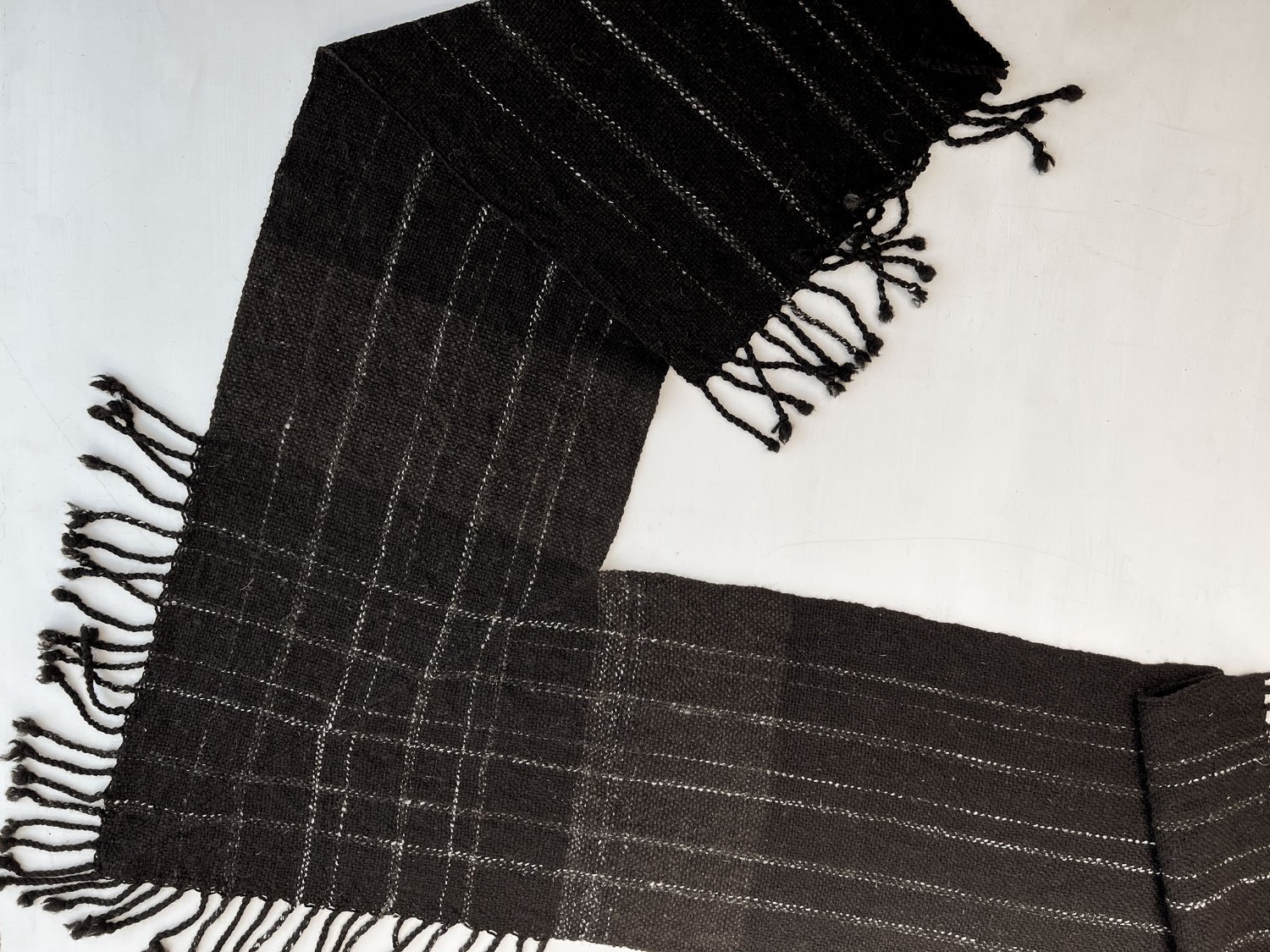
This is a handspun shawl I wove last summer using wool from Beauty, a black and white sheep. As I was weaving I knew that I’d run out of the black wool, so I spun some of Lupine’s wool to fill in. That is the gray part before the v of the shawl. (This shawl is for sale here.)
The original intent of this post was to show several ewes that I sometimes get mixed up—they are two horn lilac ewes and I think they all look similar.

This ewe is Meridian Foxy.

Meridian Vixen.

Meridian Lavender. Vixen’s and Lavender’s ear tags (ID tags in the left ear) are 6046 and 7046 so that is another way to get them mixed up.

Meridian Belle.
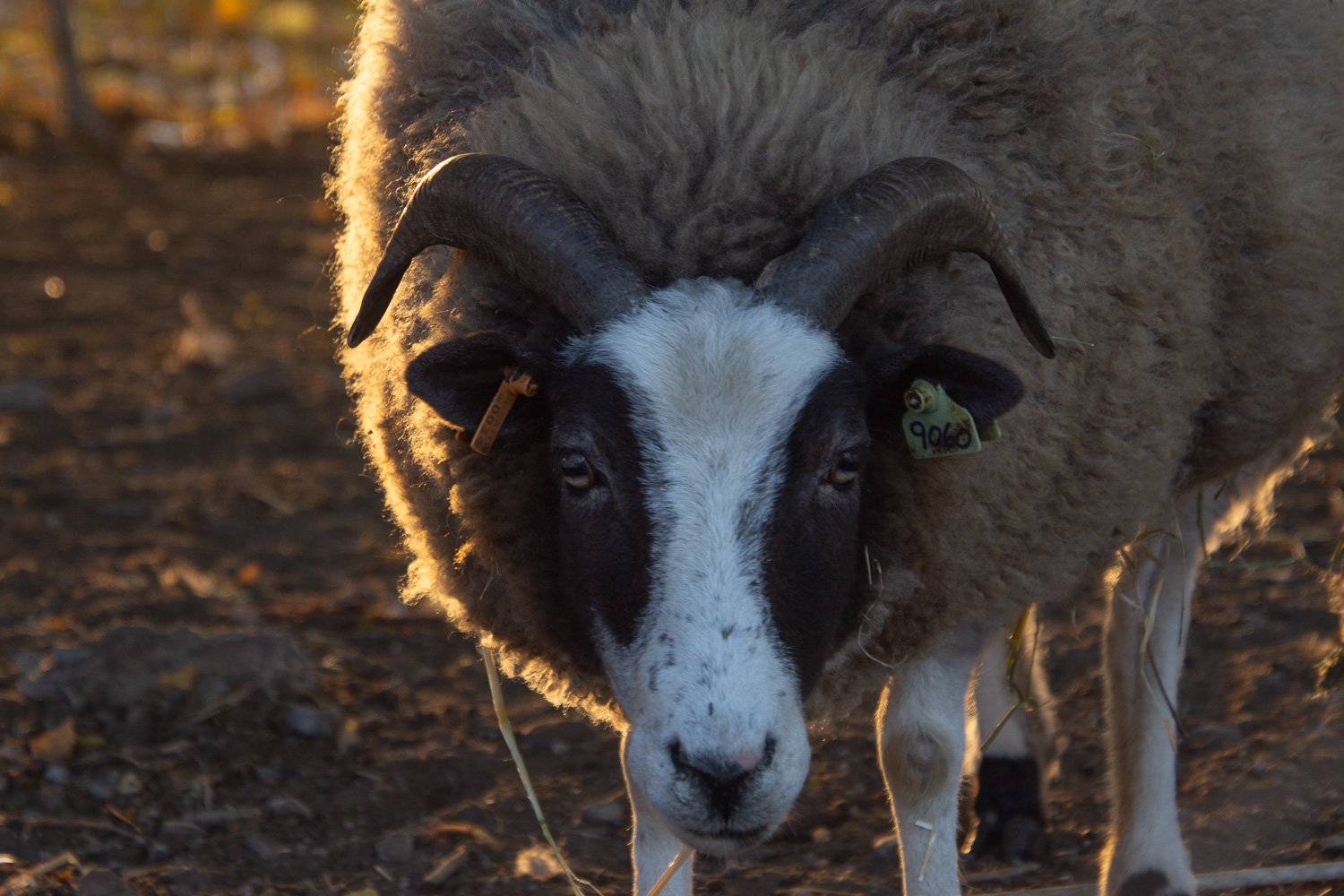
Meridian Bessie. Belle’s and Bessie’s numbers are 9006 and 9060, another reason to lose track.

The other ewes were all bred and born here. This is Patchwork Amara from Georgia.
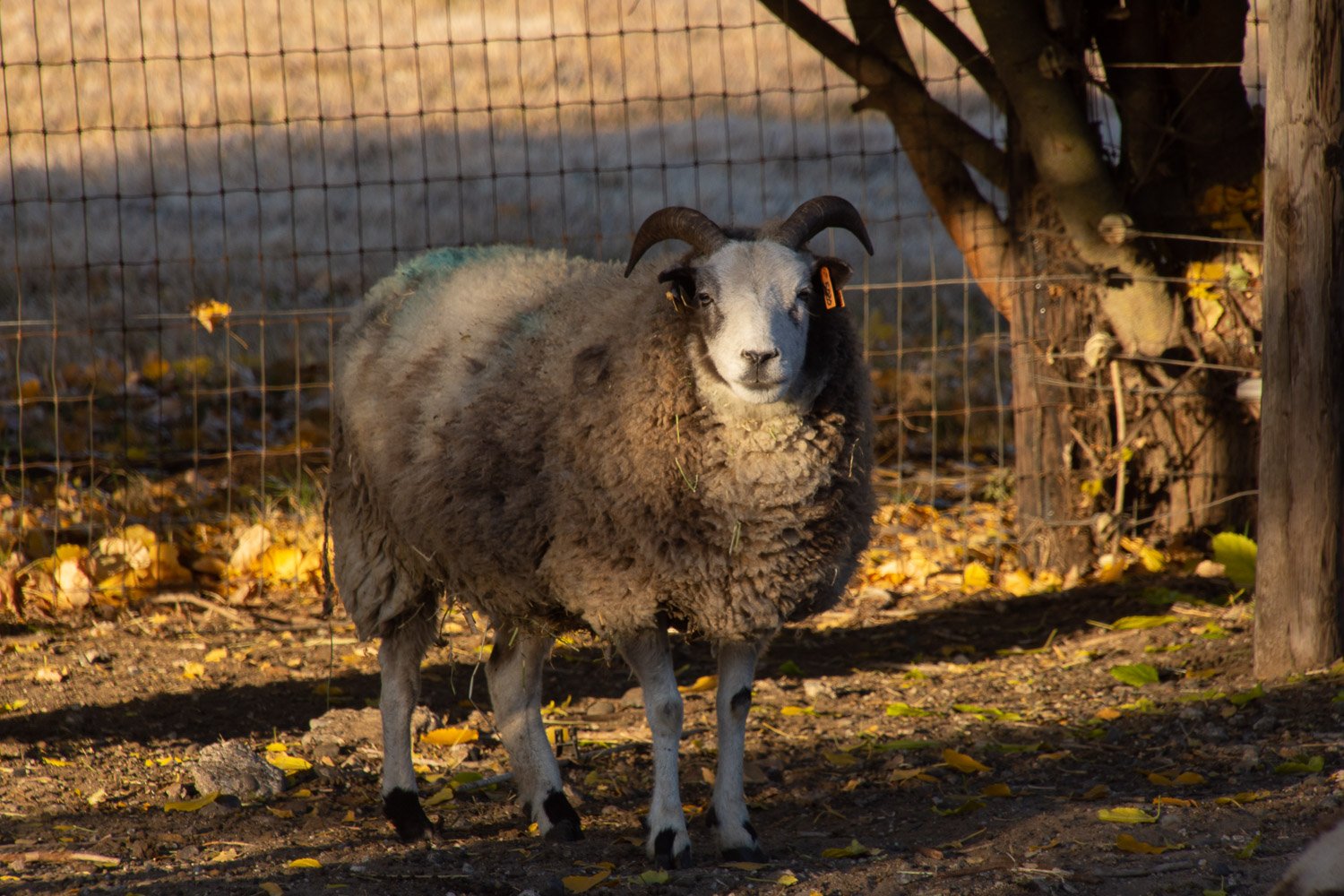
These are full body photos of the ewes above. This one is Foxy.

Vixen.

Lavender.

Belle.

Bessie.
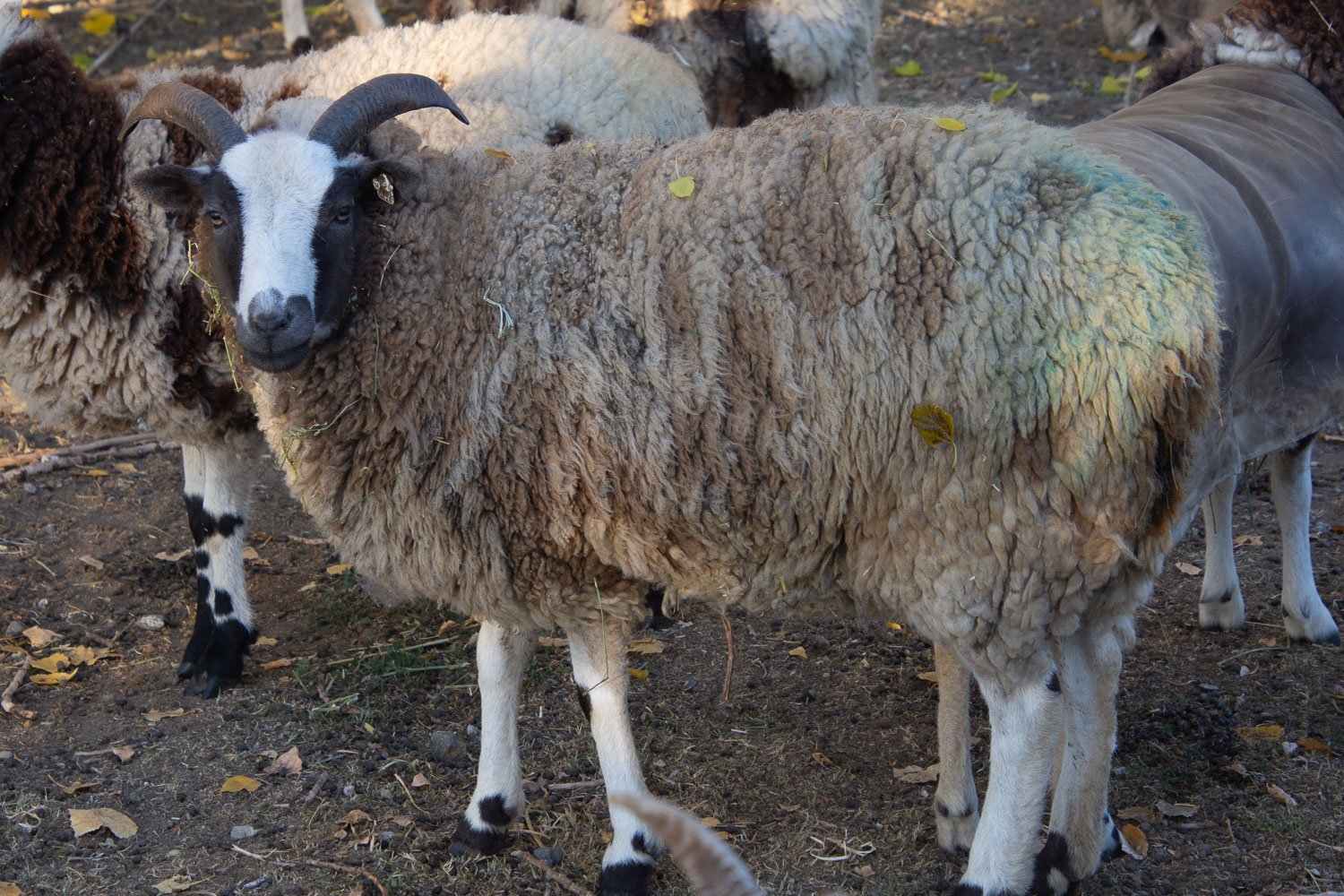
Amara.
Can you tell why I get these mixed up?

I won’t mix up these sheep, but they point out more of the variety of lilac coloring. From left to right this is Axis, Thorn, and Bravo. Axis is a yearling and the other two are March 2022 lambs. Thorn is a black and white ram, although his wool looks very dark brown in this photo—remember, that is because the tips are sunbleached. Axis and Bravo are both lilac rams but there is a big difference in the look of the wool.

Axis has the gray wool typical of my lilac Jacob ewes. Bravo’s wool is a bit browner. This photo makes him look a light brown, but that is those sunbleached tips again. Wait for shearing day for some interesting photos of the fleeces.
I needed to find some photos for a special request. You’d think that with over 4300 sheep photos (according to Lightroom) I wouldn’t have to take more. But I did. I’ll share some. Most are in the Sheep Portrait category.

Meridian Hazel, one of our very friendly sheep. She will be three when she lambs in the spring.

Meridian Raquel is our second oldest ewe. She will be 10 in the spring. Her upper right horn was damaged and grew down over her face. For years it was right in front of her eye but it broke a few years ago and now she has full vision.

Meridian Janna, almost five years old.

Hillside Hannah’s Grace came from Michigan in 2021. She will lamb for the first time in the spring.
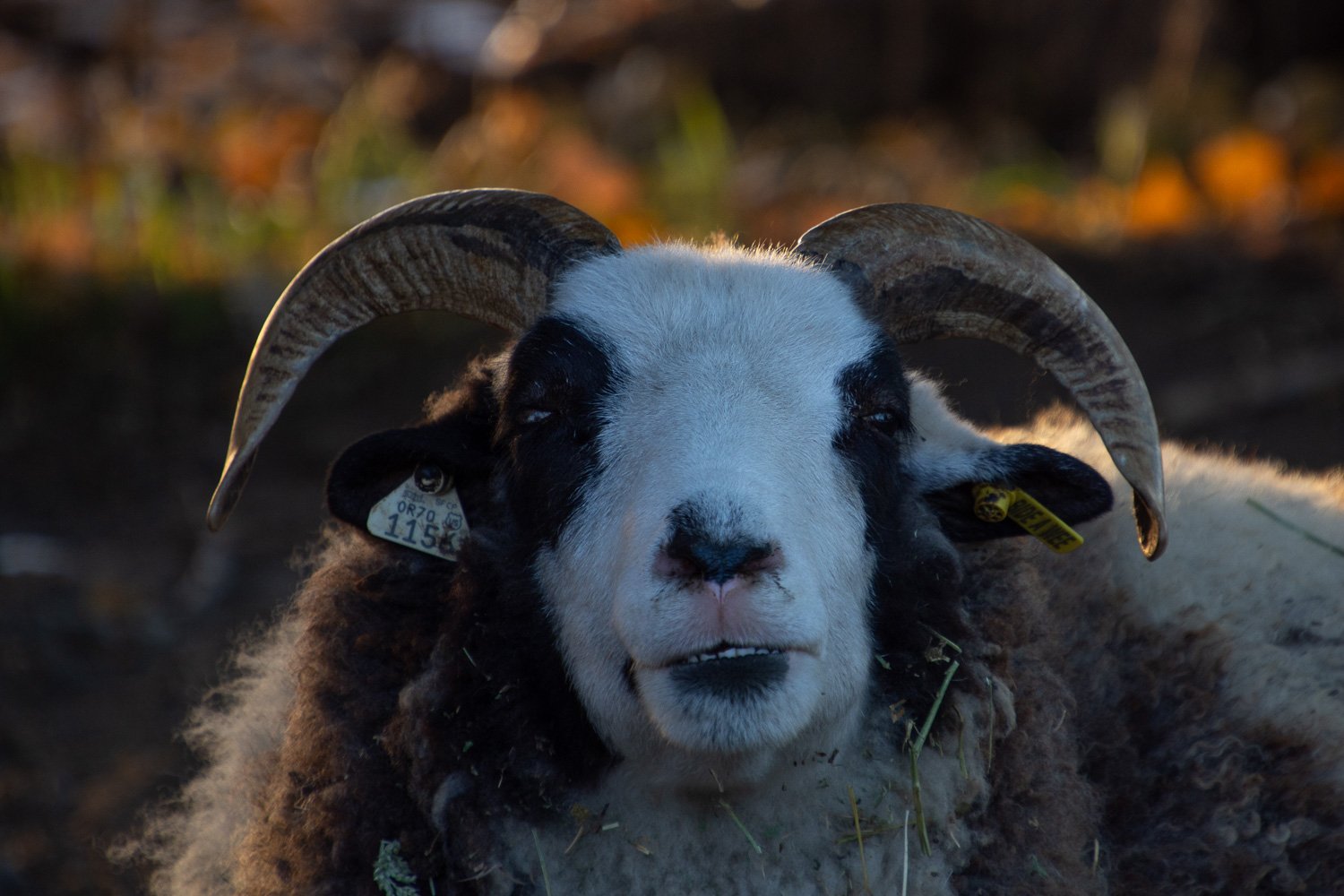
This ewe, bide a wee Hallie, came home with me from Black Sheep Gathering in Oregon 7 years ago.

Meridian Terri, a 5-year-old ewe.

Meridian Lenore, one of the 2022 lambs.

This is Lenore with her dam, 5-horn Sweetgrass Tranquility, a ewe who came from Michigan in 2021.

Another mother-daughter pair. The daughter is Meridian April, the last lamb born in 2022, and her 4-horn dam, Meridian Columbine.

The sheep are still spending a lot of time in the pasture, but they come in as a group to relax. After an hour or so they will get up and go back out.
It was still mild weather. The Sacramento Valley got rain, but not much here—not enough to show in the rain gauge.

The sheep moving to the gate where I will let them into the next paddock.

A sheep farmer’s version of fall color. Peyton, the BFL ram, was the one with the red marker. I moved his ewes out a few days ago and now they are with Townes. Silverado and Barrett still have some ewes, but I’m getting ready to be finished with breeding season.

This is one of my favorite views of the property.

Patchwork Townes is the ram with the most ewes now at the end of the season. His marker has been switched to green, but I think there is only one ewe marked green.

We held Hug a Sheep Day on Saturday, but it was mostly for Farm Club members with a few other friends who came. We had the most huggable sheep available. That’s Jade and her daughter, Hazel.

At the end of the day I walked across the road and took my customary photo looking south to Mt. Diablo. One of these days I’ll share the series of photos I took from this spot throughout the growing season.
After that last heavy post I thought I’d share some photos from today. Darn, I forgot to take some during the weaving class I taught today. I’d better get some tomorrow.

I took this photo this morning after removing the ram marking harness from Barrett. I am pretty sure there are still ewes in his group who are not bred but I was having a hard time seeing any new marks. This started out as an orange marker but you can see that all the crayon part is gone.

Here is what a new blue marker looks like in that harness.

This is Barrett—Hillside Gabby’s Barrett, to give his full name. He was born in the spring of 2021 and came here from Michigan.

He has a very nice, soft fleece.

This was taken a few days ago after I replaced the worn out marker from Townes’ harness with a new blue one. Let’s hope for some rain to wash those marks off!

Change of scene here. After today’s weaving class I took Ginny on our regular walk Across the Road. We didn’t start out with a tennis ball, but she found one somewhere along the way and then did her usual trick of dropping it into the ditch where the water is too swirly for her to go in after it. That water is quite turbulent and the cement sides of the ditch are steep. I saw her lying on the bank looking intently at something in the water. It was a tennis ball that was trapped in the eddies of the water.

I fashioned a net as I have done before by weaving her leash onto a forked stick. Even with this advanced tool it took me about 20 minutes to get that ball out of the water. I was kneeling on the wooden planks with my toes hooked over the edge so I wouldn’t fall in.
Then we finished our walk.
Another surprise awaited me at the barn this morning.
Read MoreLambs are still coming. This is more lambing photos and story of one lamb in need of physical therapy.
Read MoreYesterday’s post ended with Lamb #38. As of this evening we’re at #60. I’ll fill in a few of the others here.

In the last post I said that Betty rejected one of her lambs after it got on the other side of a gate. I’d rather have lambs raised by a ewe than bottle feed them. Ruth lambed at around 1:30 a.m. the following day and one lamb died right at birth. I repeated the process I did with Terri’s lamb the previous day, although this time I used the dead lamb to cover Betty’s lamb with membranes and slime. Ruth thought that it smelled right and she started cleaning the new lamb. Success!

Meanwhile, Raquel lambed with triplets.

Aphrodite had a BFL X lamb that weighed 13.4 lbs!

The following day three Farm Club members came to help with lamb tasks. That was much appreciated. By this time there were ewes and lambs in overflow pens everywhere so we were able to start moving some and cleaning pens. Before moving we give each lamb a BOSE (selenium) injection, ear tag it, and band the tail. We had to pay attention to the lamb numbers since we had moved rejected lambs to other ewes and needed to make sure we could correctly identify the biological mother of those lambs.

I had discovered that morning that one of Raquel’s triplets didn’t look so good. I thought that they had all nursed, but now I realize that with all that was going on (another story) I hadn’t paid close enough attention. At this point he was weak and cold. We tried bottle feeding him, but that didn’t work. I ended up tube feeding that lamb twice and after that he was able to get up and nurse on his own.

I set up a heat lamp and all three lambs cuddled up under it.

During the night Patsy (the ewe in the last post who lambed with 4 and 8 pound lambs) died. I had seen that she wasn’t feeling well and started her on antibiotics at the advice of the vet but it was too late. We took her for a necropsy and I’m still waiting for the final report. (Preliminary report shows infection and uterine tear.) Her death leaves two more bottle babies so Farm Club members helped feed them.

They also were there to watch another birth.

Hazel and Jade are still our friendliest sheep.

The next morning Belle lambed. Belle is owned by my 7-year-old granddaughter who lives in Texas. This blog post from 2019 tells the story of Kirby showing Belle as a lamb and has one of my favorite photos of her with Belle and the pink ribbon she won. But back to the present. Since Belle is registered to Kirby, the lambs are also hers. She named Belle’s 2021 lamb Beauty and she is still in the flock. I texted photos of these lambs to Kirby and she asked if she could name them. She wants to name the ram Beast and the ewe Rose. Do you catch the theme?

This is the ewe lamb, Rose.

These are Patsy’s lambs that are now bottle fed.
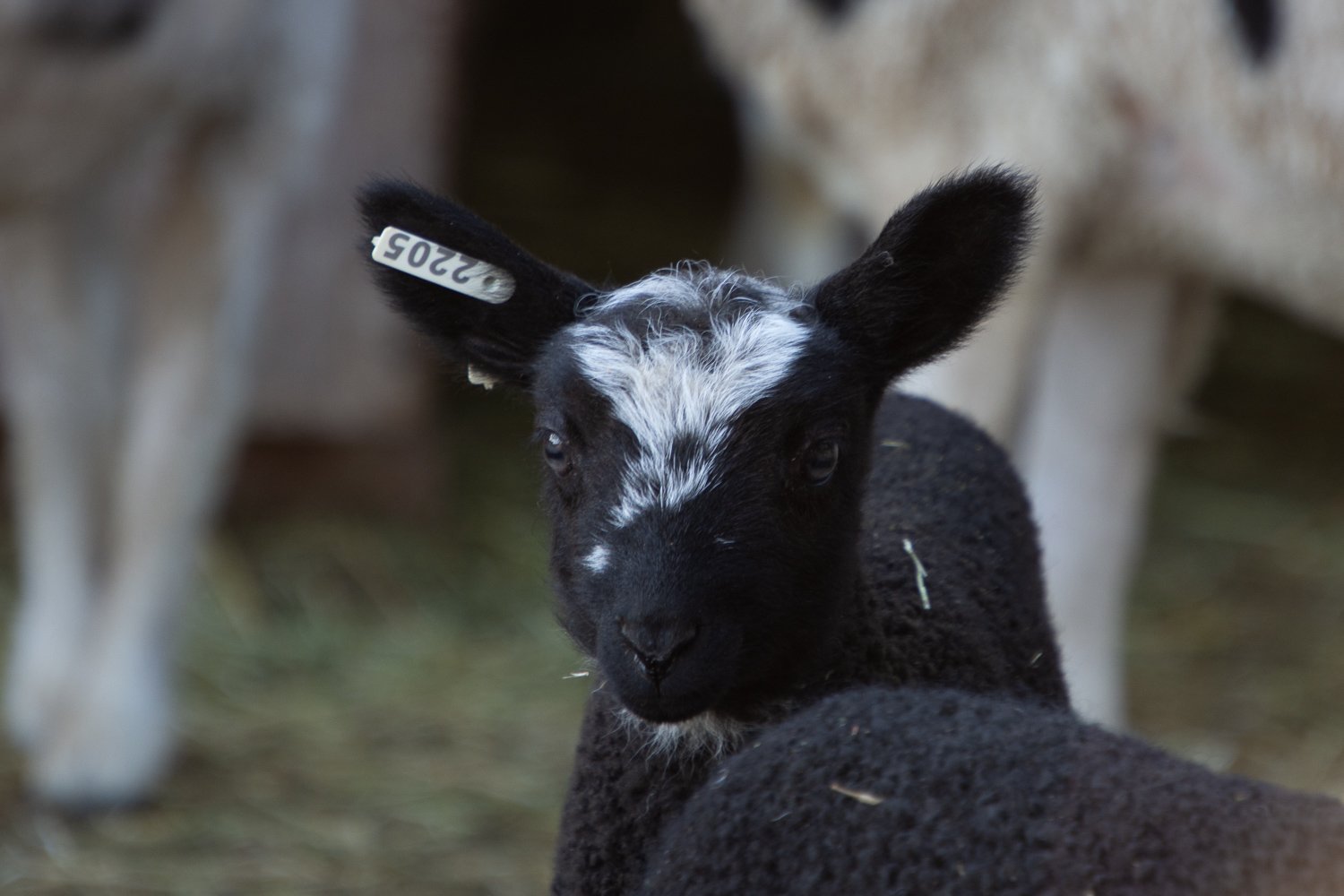
I have started taking photos of lambs to have them for the website. The crossbred ones aren’t listed on the site, but they sure are photogenic.
This was a busy day of lambing—seven ewes lambed with 12 lambs.
Read MoreShearing Day at Meridian Jacobs—we sheared over 80 Jacob sheep.
Read MoreAt Meridian Jacobs farm we raise Jacob sheep and sell locally grown wool fiber, yarn, and handwoven goods. We teach fiber classes and sell Ashford, Clemes & Clemes, and Schacht spinning and weaving equipment. We encourage farm visits with field trips and our unique Farm Club.
Search blog posts since 2019. If the search says it can’t find a post try putting in your search word a second time. I don’t know why but the second time it seems to work.
Search the entire website, including older blog posts.